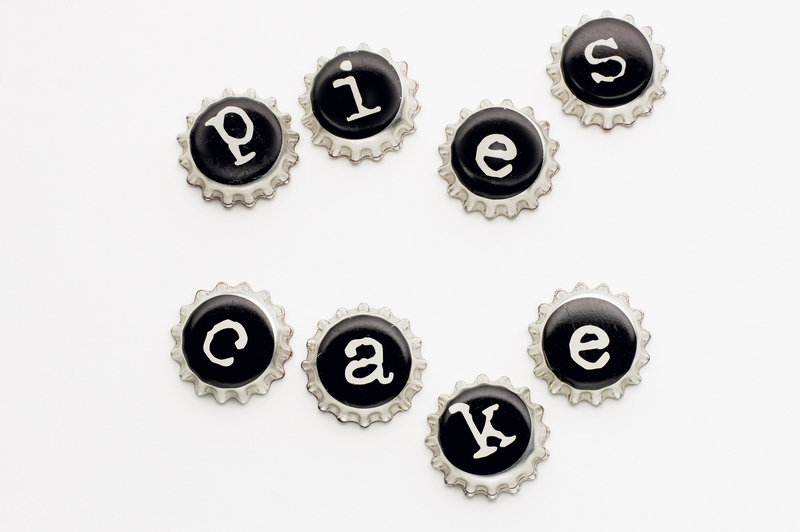A Deep Dive into Hazardous Waste: What's Considered?
Hazardous waste management is a crucial topic for industries, municipalities, and households alike, impacting both public health and the environment. But what exactly qualifies as hazardous waste? As the world becomes more aware of the risks associated with improper disposal, regulations tighten, and the range of items classified as dangerous grows. In this comprehensive guide, we'll explore the definitions, types, classifications, examples, and disposal methods of hazardous waste, empowering you to understand what's considered hazardous waste and why it matters.

Understanding Hazardous Waste: Definition and Context
At its core, hazardous waste refers to toxic, reactive, corrosive, or flammable materials that threaten human health and the environment. Management and classification vary by country and region, but the overarching principles remain consistent worldwide.
- Legally, the U.S. Environmental Protection Agency (EPA) defines hazardous waste as "waste with properties that make it dangerous or capable of having a harmful effect on human health or the environment."
- Internationally, agreements such as the Bale Convention regulate trans-boundary movements and disposal.
- Locally, municipalities may have stricter or additional guidelines.
Whether you're running a business or managing household waste, knowing what materials are considered hazardous waste is the first step towards responsible stewardship.
The Four Main Characteristics of Hazardous Waste
Not all dangerous wastes are the same. The EPA and global regulators use four key characteristics to identify and classify hazardous waste materials:
- Ignitability: Wastes that can easily catch fire under typical storage conditions. Examples include solvents, oils, and certain aerosols.
- Corrosivity: Wastes with the ability to corrode metals or destroy living tissue. Includes strong acids (like battery acid) and bases (like lye).
- Reactivity: Chemically unstable or reactive materials that can explode or release toxic fumes, such as lithium batteries and certain pesticides.
- Toxicity: Substances that are harmful or fatal when ingested, inhaled, or absorbed. Heavy metals (lead, mercury), benzene, and many pharmaceuticals are typical examples.
Any waste exhibiting one or more of these traits is likely to be classified as hazardous waste and must be handled and disposed of accordingly.
Types and Categories of Hazardous Waste
Hazardous waste isn't limited to toxic sludge from factories. It spans a wide variety of sources and forms. Here are the primary types of hazardous waste:
1. Listed Hazardous Waste
Certain wastes are specifically listed by regulatory agencies due to their particularly dangerous properties. In the United States, the EPA's Resource Conservation and Recovery Act (RCRA) includes four categories:
- F-list: Wastes from common manufacturing and industrial processes, such as solvents used for cleaning or degreasing.
- K-list: Specific wastes from certain industries, such as petroleum refining or pesticide manufacturing.
- P-list and U-list: Discarded commercial chemical products, often including expired pharmaceuticals, pesticides, or unused chemicals.
2. Characteristic Hazardous Waste
As discussed, wastes that are not specifically listed but exhibit ignitability, corrosivity, reactivity, or toxicity fall into this category. Examples include certain cleaning products, unused paint thinners, and acids.
3. Universal Waste
Universal wastes are commonly produced hazardous materials that pose a lower risk individually but a significant threat if mismanaged in aggregate. These include:
- Batteries (nickel-cadmium, lithium, lead-acid)
- Certain pesticides
- Mercury-containing equipment (thermometers, thermostats)
- Fluorescent lamps and bulbs
4. Mixed Waste
This refers to waste that contains both radioactive and hazardous components, posing complex disposal challenges. It often originates from hospitals, research labs, and some manufacturing facilities.
Common Examples of Hazardous Waste
Hazardous waste can be found in surprising places, from industrial sites to your own home. Here's an overview of typical sources:
- Industrial: Solvents, paint sludge, spent acids and bases, electroplating residues, petroleum refining byproduct, chemical manufacturing waste.
- Medical: Pathological waste, pharmaceutical waste, sharps, disinfectants, chemotherapy drugs.
- Household: Batteries, leftover paints and varnishes, pesticides and herbicides, household cleaners, outdated electronics (e-waste).
- Auto Shops: Used motor oil, brake fluid, antifreeze, degreasers, oily rags.
- Agriculture: Pesticide containers, surplus chemicals, veterinary pharmaceuticals.
Even the contents of your medicine cabinet or garage may qualify as hazardous waste. This underlines the importance of public awareness and proper disposal.
The Dangers and Impact of Hazardous Waste
Why does it matter what's considered hazardous waste?
- Environmental Harm: Improper disposal contaminates soil, water, and air, threatening plants, animals, and aquatic life.
- Public Health Risks: Many hazardous materials are carcinogenic, neurotoxic, or can cause respiratory failure and developmental issues, even at low exposures.
- Economic Costs: Cleanup of polluted sites, health care for exposed populations, and loss of biodiverse habitats carry significant costs for communities and nations.
Credible waste management prevents disasters such as Love Canal or the Chernobyl exclusion zone from repeating.
Regulations Governing Hazardous Waste
Understanding which wastes are hazardous is tightly linked to regulatory frameworks.
Key U.S. Regulations
- Resource Conservation and Recovery Act (RCRA): Sets criteria for hazardous waste identification, management, storage, transportation, and disposal.
- CERCLA (Superfund): Funds cleanup of hazardous waste sites and mandates reporting and management of hazardous substances.
International Treaties
- Bale Convention: Controls the movement of hazardous waste across borders to prevent dumping in less developed countries.
- Stockholm Convention: Protects human health and the environment from persistent organic pollutants (POPs).
Compliance isn't optional--failure to adhere to regulations can result in hefty fines and criminal charges.
Hazardous Waste Management: From Cradle to Grave
Responsible disposal of hazardous waste is a multi-step, regulated process often referred to as the "cradle to grave" approach, which follows the lifecycle of waste from generation to final disposal.
- Identification: Accurate labeling and documentation of hazardous waste types is the foundation of safe management.
- Storage: Specialized containment--such as leakproof drums, secure tanks, and isolated facilities--prevents accidental releases.
- Transportation: Only authorized carriers may move hazardous waste, using permitted routes and methods to minimize risk.
- Treatment: Methods include incineration, chemical neutralization, stabilization, and biological processing to reduce toxicity.
- Disposal: The final step, such as landfilling in lined cells, deep well injection, or exporting to certified treatment facilities.
Reuse, Recycling, and Reduction
Where possible, reducing waste generation, reusing materials, and recycling (such as mercury recovery from bulbs) offer substantial environmental benefits and may be legally mandated.
How to Identify Hazardous Waste in Your Facility or Home
If you're unsure whether a product or material counts as hazardous waste, here are some simple steps:
- Check the Label: Look for danger, caution, warning, poison, or corrosive/universal hazard symbols.
- Read the Safety Data Sheet (SDS): All chemicals and many products provide hazard information for users.
- Contact Local Waste Authorities: City or state environmental departments offer guidance on proper handling and disposal.
- Use EPA Lists and Characteristic Tests: Businesses must perform waste analysis when generating waste with uncertain properties.
If in doubt, always treat the material as hazardous and seek expert advice.
Proper Disposal: What Should You Do?
For Households
- Never pour hazardous materials down the drain, onto the ground, or into trash cans.
- Use designated household hazardous waste collection events or drop-off points.
- Recycle batteries, bulbs, and electronics at local authorized centers.
- Read product labels for manufacturer-provided disposal instructions.
For Businesses
- Register as a hazardous waste generator where required.
- Label, document, and segregate all hazardous wastes at the point of generation.
- Train staff in safe handling and emergency procedures.
- Maintain required permits and keep detailed manifests for shipping waste to disposal facilities.
- Always partner with certified hazardous waste management contractors.

Innovations and the Future of Hazardous Waste Management
The landscape of hazardous waste is changing rapidly:
- Electronic waste--like cell phones, computers, and power supplies--contains heavy metals and persistent toxins, demanding new recycling and recovery solutions.
- Green Chemistry is reducing the industrial reliance on toxic substances.
- Advanced remediation techniques now clean up contaminated sites with greater efficiency and less risk.
- Global standards and cooperation are harmonizing rules, reducing illegal dumping, and encouraging responsible practices worldwide.
Conclusion: Why Knowing What's Considered Hazardous Waste Matters
Understanding what's considered hazardous waste goes beyond regulatory compliance--it's the cornerstone of environmental responsibility and public safety. From the flammable solvents in industry to the leftover pesticide in your shed, proper identification and disposal protect our water, air, land, and health for generations to come.
Stay informed, follow all relevant requirements, and share knowledge with others. Whether you're a business owner, facility manager, or concerned citizen, every action helps prevent pollution and ensures a safer, healthier future.
For more insights and resources on hazardous waste management, consult your local environmental agency or industry professionals. Remember: Pollution prevention starts with understanding what's hazardous and how to handle it right.